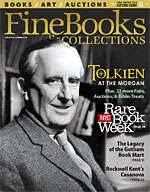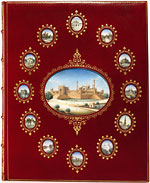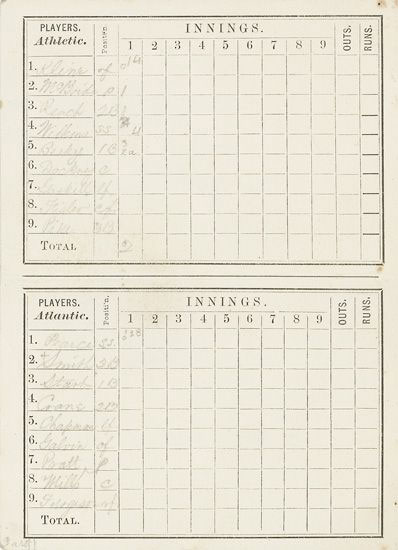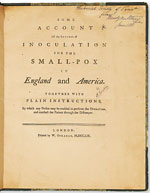 Ian McKay’s weekly column in Antiques Trade Gazette has been running for more than 30 years.
Ian McKay’s weekly column in Antiques Trade Gazette has been running for more than 30 years. Collectors and Their Collections
The Jewel of the Palace
Lt.-Col. Charles Ramus Forrest, Picturesque Tour along the River Ganges and Jumna in India, $50,000 at Sotheby’s New York on October 18, and $11,250 at Christie’s New York on June 23.
The twenty-four hand-colored aquatints after Forrest that illustrate this Ackermann publication of 1824 are regarded by some as the finest Indian views by an amateur artist. The exquisite palace that the Mughal emperor, Shah Jahan built at Agra in memory of the beloved wife he called Mumtaz Mahal, the Jewel of the Palace, is also principal of three oval miniatures on the lower cover of the luxuriously bound copy of Forrest’s work that Sotheby’s sold as part of the Safra collection of Cosway bindings (noted previously).
Keeping Score
Athletic vs. Atlantic, the first printed baseball scorecard, $36,000 at Swann Galleries of New York on September 15.
Partially completed in pencil, this card dates from the days before organized leagues and overt professionalism, though top-level players such as those involved in this ‘Great Game for the Championship of the United States’ were already sharing gate receipts.
Some thirty thousand sports fans came to see this 1866 game between the Athletlic Club of Philadelphia and Brooklyn’s Atlantic Club, in which the Athletics scored two runs in the top of the first inning before the surging crowd—far too many to be accommodated at the rather primitive venue—caused the game to be cancelled in the bottom half of the inning, as reflected on this card.
The card was one of the successes of the first of three sales planned for the dispersal of ‘How History Unfolds on Paper,’ a vast collection of books, manuscripts, autographs, photographs, broadsides, and ephemera that Eric C. Caren has spent years building and revising—and one in which he set himself the surely impossible aim of acquiring a representative document from every important even in modern history.
Franklin on Inoculation
Benjamin Franklin & William Heberden, Some Account of the Success of Inoculation for the Small-Pox in England and America, $15,600 at Swann Galleries of New York on October 17.
Franklin had once actively opposed inoculation, but the tragic death of his son in 1736 helped change his mind, and he went on to become one of its strongest advocates. Published in 1759, this statistical account of smallpox inoculation in Boston during a 1753-54 epidemic, showing the beneficial results, was written in collaboration with Heberden, who added the “Plain Instructions by which any Person may be enabled the Operation, and conduct the Patient through the Distemper.”
A sometime deaccessioned duplicate from the library of the Historical Society of Pennsylvania, it bore their embossed stamp and bookplate.










